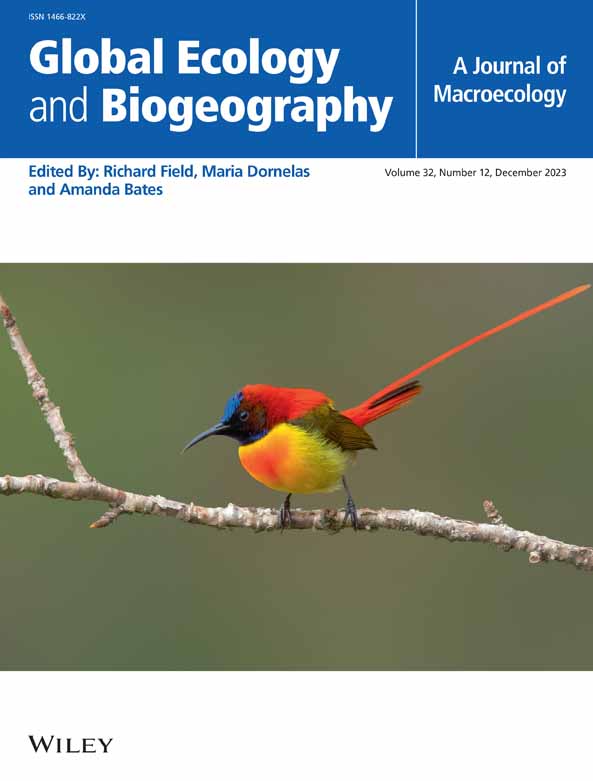Marked Variability in Distance-Decay Patterns Suggests Contrasting Dispersal Ability in Abyssal Taxa
Abstract
Aim
We assess the role of spatial distance and depth difference in shaping beta diversity patterns across abyssal seascape regions. We measured the decrease of faunistic similarity across the northeast Pacific seafloor, to test whether species turnover rates differ between deep and shallow-abyssal biogeographical provinces and whether these patterns vary across functionally or taxonomically different biotic groups.
Location
Abyssal NE Pacific Ocean.
Time Period
Present.
Major Taxa Studied
Benthic Invertebrates (13 Phyla).
Methods
We examined the relationship between compositional similarity (𝛽sim) and spatial distance, distance-decay, in benthic megafauna communities (animals > 10 mm) based on seabed imagery data (> 36,000 specimens in 402 species) collected across 28 abyssal seascape locations spanning a total of 4000 km. By comparing the statistical parameters (intercept and slope) of decay curves, we investigated whether distance-decay patterns differ (i) between communities above and below the carbonate compensation depth (~4400 m at N Pacific), (ii) among taxa with contrasting life-habits and (ii) across dominant phyla.
Results
We found steeper species turnover rates in communities below 4400 m and variations in distance-decay patterns across biotic groups. Turnover was higher for taxa facultatively growing on hard-substratum patches (polymetallic nodules) than for sediment-dwelling or swimming organisms. Cnidaria and Porifera, respectively, depicted the most and least evident spatial decays in community similarity.
Main Conclusions
We demonstrate the utility of combining seabed imaging with distance-decay modelling to capture macroecological patterns in poorly explored deep-sea ecosystems. Our results suggest that chemical boundaries associated with depth are a very relevant niche-sorting mechanism driving large-scale beta-diversity patterns and an association between species life-habits and dispersal limitation in abyssal seabed communities. These findings have important implications for biodiversity conservation plans in the deep ocean, amid the need to protect vast abyssal seascape ecosystems from globally rising human threats.


 求助内容:
求助内容: 应助结果提醒方式:
应助结果提醒方式:


